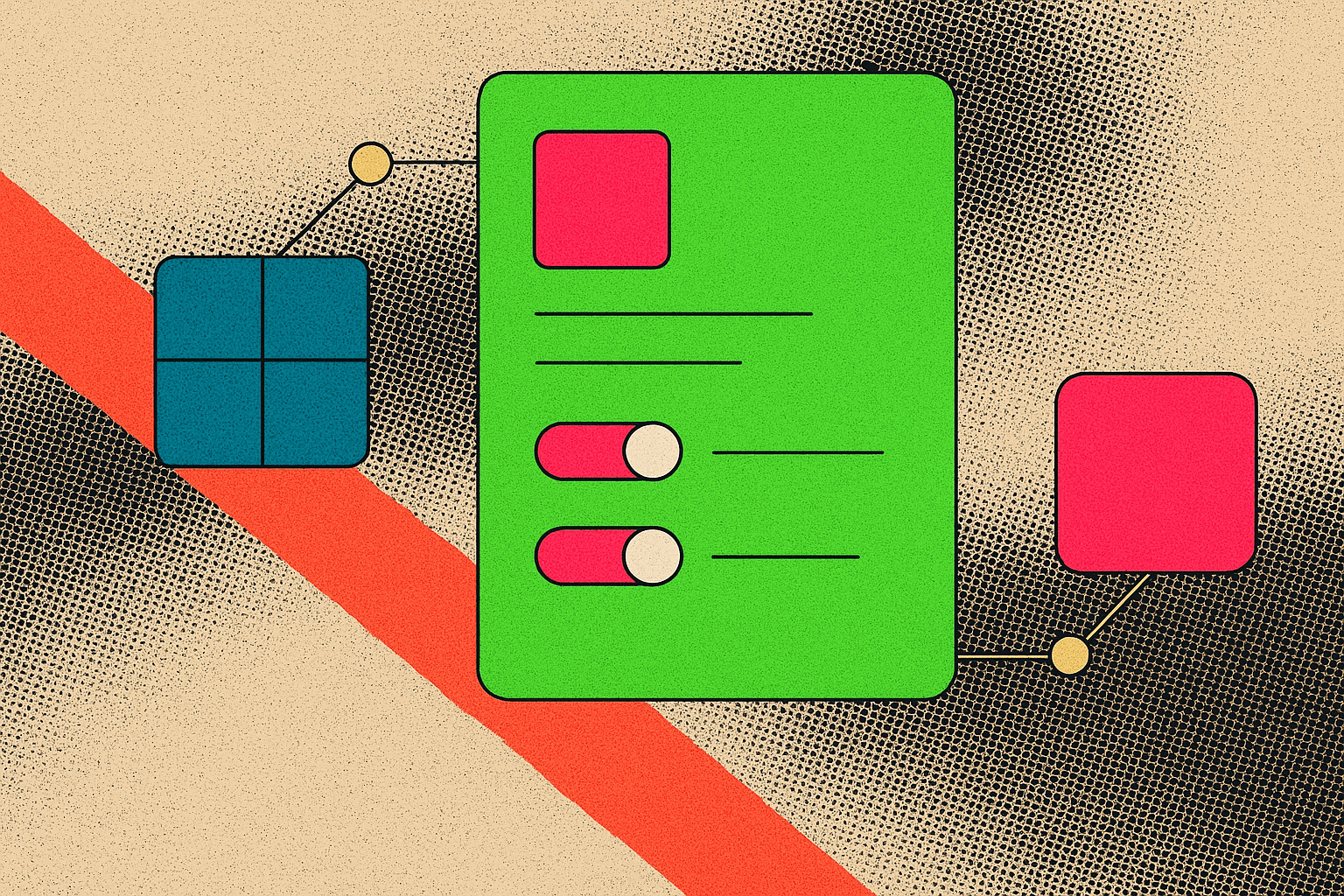Building large digital products isn’t easy. Every new feature and screen adds complexity—and without guardrails, UI quickly fragments. That’s where design systems shine. As the Nielsen Norman Group defines it, a design system is “a set of standards to manage design at scale by reducing redundancy while creating a shared language and visual consistency across pages and channels.”
“Design systems are the industry secret to scaling enterprise user experiences.” — Figma.
An excellent design system works like LEGO blocks for product teams. Instead of rebuilding buttons, forms, or icons from scratch, teams pull from a living library. This saves time and ensures every feature feels like part of the same product family.
In practice, a design system is more than colours or specs—it’s a product development blueprint. As Atlassian explains, it’s “the blueprint for product development that industrialises menial work so teams can focus on core problems.”
Key Benefits of Design Systems
Consistency Across the Board: Every UI element—from buttons to dialogues—follows the same rules, unifying your brand and making your product predictable. NN/g notes systems create “visual consistency across products, channels, and departments.” Consistency isn’t just aesthetic; it’s usability.
Speed & Efficiency: Prebuilt components let teams prototype and build faster. NN/g highlights that systems enable “quick replication at scale,” while Netguru adds that they “streamline design processes and boost development efficiency.”
Better Collaboration: Design systems bridge gaps between designers, developers, and PMs by establishing a unified UI language. NN/g notes they create “a shared vocabulary for cross-functional teams.
Higher Quality: Standardised, tested components reduce UI bugs. As ShipServ’s case study showed, their system “ensured faster iterations, compliance, and reduced time-to-market.”
“Design scales. But it scales only with a design system.” — Atlassian
How we did it as ShipServ
At ShipServ, I documented how we dealt with a fragmented UI. Our challenge was to maintain consistency, but this became impossible given disjointed styles across teams, especially after we were acquired.
The solution? A comprehensive design system built in Figma and Storybook, with two goals:
Consistency: Unify components and guidelines.
Documentation: Empower designers, engineers, and PMs.
For product leaders, the lesson is clear: Design systems aren’t optional for scaling digital products. They’re the backbone that prevents collapse under complexity.
The Bottom Line
Investing in a design system pays dividends:
✅ User satisfaction through consistency
✅ Faster delivery with reusable components
✅ Cost savings from reduced rework
As Atlassian puts it: “Design scales—but only with a system.” If you haven’t started one yet, now’s the time.



